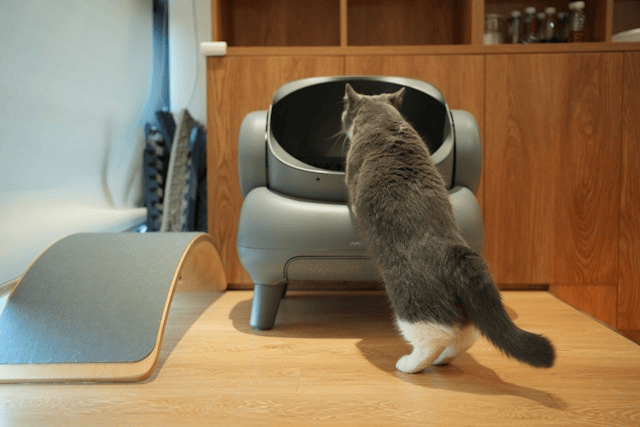Choosing the right litter box might not seem like a big deal until your cat starts avoiding it, making messes around the house, or acting stressed. The truth is, a litter box is more than just a bathroom; it’s a crucial part of your cat’s routine and comfort. Whether you’re a first-time pet parent or upgrading your setup, understanding how to choose a litter box that suits both you and your feline can make all the difference.
In this guide, we’ll walk you through the different types of litter boxes, key factors to consider, and tips to ensure your cat’s toilet habits stay clean, consistent, and stress-free.
Why the Right Litter Box Matters
Cats are naturally clean animals, but if their litter box isn’t comfortable, accessible, or clean, they may avoid it altogether. This can lead to unwanted behaviors like urinating outside the box or excessive grooming due to stress.
The best litter box for cats isn’t just about appearance or price it’s about size, design, accessibility, and how well it fits your living space and your cat’s personality. With so many types of litter boxes available, making the right choice involves more than just grabbing the first one on the shelf.
Types of Litter Boxes
When thinking about how to choose a litter box, the first step is understanding your options. Here are the most common types:
1. Open Trays
These are the traditional, uncovered litter boxes. They’re simple, affordable, and easy to clean. Most cats accept them easily, but they offer no odor control and minimal privacy.
2. Covered or Hooded Boxes
These have a lid that offers more privacy and helps contain odors. However, some cats may feel trapped or dislike the enclosed space, especially if ventilation is poor.
3. Top-Entry Boxes
Designed with an opening on the top, these boxes help reduce litter tracking and keep dogs or toddlers out. They’re best suited for agile, younger cats but may be difficult for older or arthritic cats to use.
4. Self-Cleaning or Automatic Litter Boxes
These boxes use sensors and automated mechanisms to clean waste without manual scooping. They can be a convenient option for busy owners but come at a higher cost and may intimidate sensitive cats due to noise or movement.
Key Factors to Consider
Size of the Box
A litter box should be large enough for your cat to turn around comfortably, dig, and squat without feeling cramped. As a rule of thumb, the box should be at least 1.5 times the length of your cat from nose to base of the tail.
If the box is too small, your cat might refuse to use it or make a mess outside it.
Number of Cats
One of the most important cat litter box tips is to follow the “one box per cat, plus one” rule. If you have two cats, you should have three litter boxes. This prevents competition and helps reduce stress, especially in multi-cat households.
Ease of Cleaning
Choose a litter box that’s easy to clean daily. Smooth, non-stick surfaces are easier to scoop, and removable lids make deep-cleaning less of a hassle. The more convenient the box is to clean, the more likely you are to maintain it and the more likely your cat is to keep using it.
Your Cat’s Preferences
Cats are individuals. Some like privacy, while others want a wide-open space. Some are picky about the texture of the litter or hate scented products. Older or disabled cats may need a low-entry box that’s easy to step into.
Pay attention to your cat’s behavior. If they’re avoiding the box, pawing excessively at the sides, or hesitating before entering, it might be time to rethink your setup.
Placement in the Home
Location matters just as much as the box itself. Place litter boxes in quiet, low-traffic areas that are well-ventilated but easy for your cat to access. Avoid placing them next to food and water bowls or in places where the cat might feel cornered.
Litter Type Compatibility
Not every box works well with every type of litter. For example, some self-cleaning models are designed for specific litter brands or clumping types.
Here are a few general considerations:
-
Clumping vs. Non-Clumping: Clumping litter is easier to scoop and works well in most open or covered boxes.
-
Scented vs. Unscented: Most cats prefer unscented litter. Strong perfumes can deter use.
-
Silica, Clay, or Natural: Choose based on your cat’s preference and your cleaning routine. Some boxes, especially top-entry or self-cleaning types, may not work well with lightweight litters.
When to Replace or Upgrade a Litter Box
Even the best litter box for cats won’t last forever. Plastic absorbs odors over time, and boxes can become scratched or cracked, making them harder to clean.
Signs it’s time to replace your litter box include:
-
Persistent odor, even after cleaning
-
Cracks or damage
-
Your cat starts avoiding the box for no clear reason
Sometimes, simply upgrading to a larger or better-designed model can resolve behavior issues or reduce messes around the house.
Conclusion
Understanding how to choose the right litter box is key to your cat’s health, happiness, and hygiene. From the type of box to its placement and cleaning routine, every detail matters. When your cat is comfortable and confident in their bathroom routine, it shows in their behavior and overall well-being.









